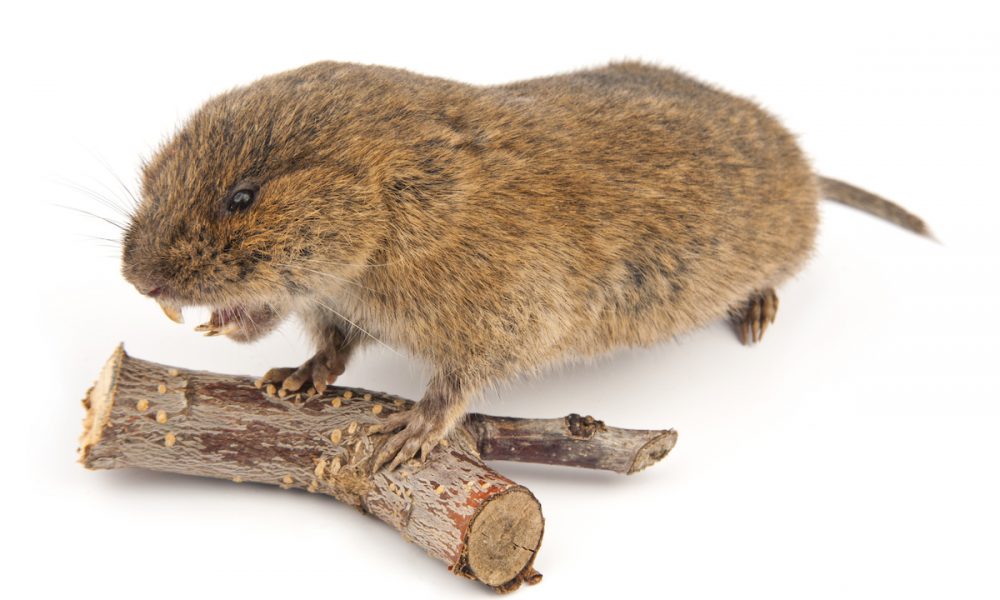
Most people have heard of a mole. Have you ever heard of a vole? Not many people have. The two are often confused. They are both rodents but, they are entirely different. Keep reading , and you will find out all about voles.
What is a vole?
Voles are a small species of mammal that are part of the rodent family and is a relative of the mouse. The vole has a stouter body, a shorter, hairy tail, a slight rounder head, short legs, small dark eyes, smaller ears that are partially hidden from view, and differently formed molars. There are approximately 155 species of voles, and they sometimes go by meadow mice or field mice in North America and Australia. Voles spend their entire lives living outdoors, and it is not normal for them to invade the inside of a home or building.
Anatomy and Characteristics
Here is some information about the vole anatomy and characteristics:
- A vole has rounded ears
- A vole’s body and is reddish or brown and black in color with a gray underside.
- Adult voles range in length from 5-8 inches including their short fur covered tail.
- Voles prefer to live in low-lying or creeping vegetation and make trails through the grass or snow.
- Voles are primarily herbivores and will feed on the roots, bulbs, bark, and seeds of many ornamental plants and grasses.
- They are often called meadow mice.
- They are closed related to hamsters.
- They typically only live for 3 to 6 months.
Dangerous?
Voles are typically not considered to be physically dangerous to people. However, they are dangerous because they can spread disease through their urine and feces and introduce parasites onto your property. They also can cause significant damage to grass, bulbs, trees, plant roots, landscaping, and grain crops. Their semi fossorial nature and penchant for groundcover makes them a challenge to identify and control.
Bite?
It is very rare to be bitten by a vole. Voles have teeth and therefore are capable of biting.
Tunnels
Voles are well known for creating underground tunnels and burrows where they store their food. They also give birth to and raise their young in these tunnels. In your lawn, you can see their tunnels on the surface. Here are the descriptions of a vole and mole tunnel.
Vole Tunnels
Voles tunnel under the snowpack in winter, but they remain above ground and create those “highways” in the grass you see when the snow melts. They consume grass and also use it to build nests.
Mole Tunnels
A mole tunnels underground, lifting the soil upwards and making your yard “squishy” when you walk on it.
Diet
Voles are primarily herbivores and feed on the bulbs, roots, bark, and seeds of many ornamental plants and grasses. Voles prefer to live in creeping vegetation, or low-lying and make trails through the grass or snow.
Signs of Vole infestation
The most obvious sign of a vole infestation on your property is finding above ground runways. Voles use these runways for travel, and they also connect the entrances of their burrows together. These runways are typically 1-2 inches wide and are found in grassy areas. Active runways will have vole droppings on the surface. Another sign of infestation is that the plants and grasses have wilted and turned yellowish in color.
Do you think you have a vole on your property? Please let our team of professionals help you. Don’t spend your valuable time dealing with things that we can handle for you. If you’re in any of the surrounding areas, give Proactive Pest Control a call at 770-800-PEST or 770-800-7378.
Contact Us
Choose Proactive Pest Control for professional, comprehensive, guaranteed pest and lawn management. The pros at Proactive will work diligently to gain your trust, confidence, and your total satisfaction. CALL US TODAY at 770-800-PEST to schedule a free, no obligation inspection and evaluation for your home or business. Or, contact us for a FREE consultation. Let us show you why Proactive Pest Control is northeast Georgia’s first choice for pest, termite, and lawn services.